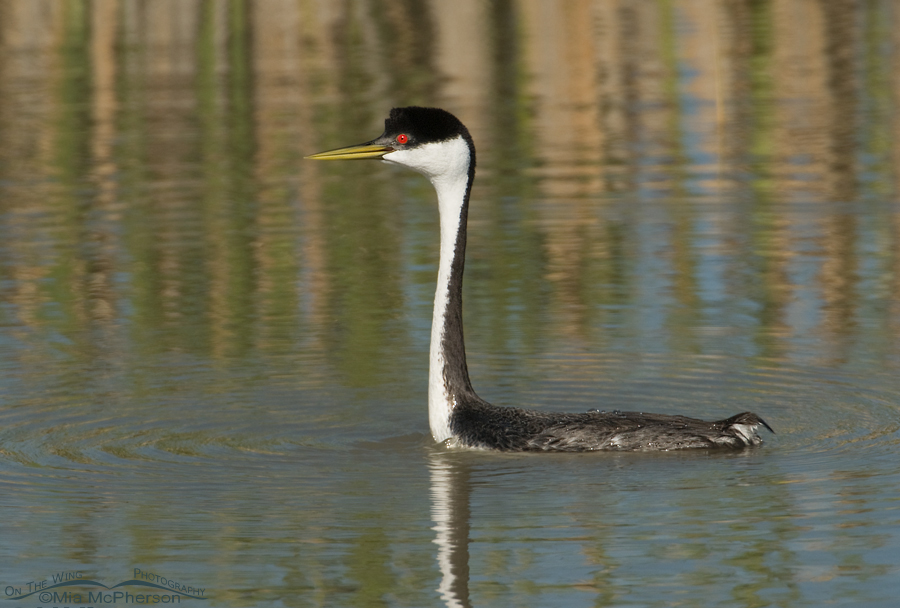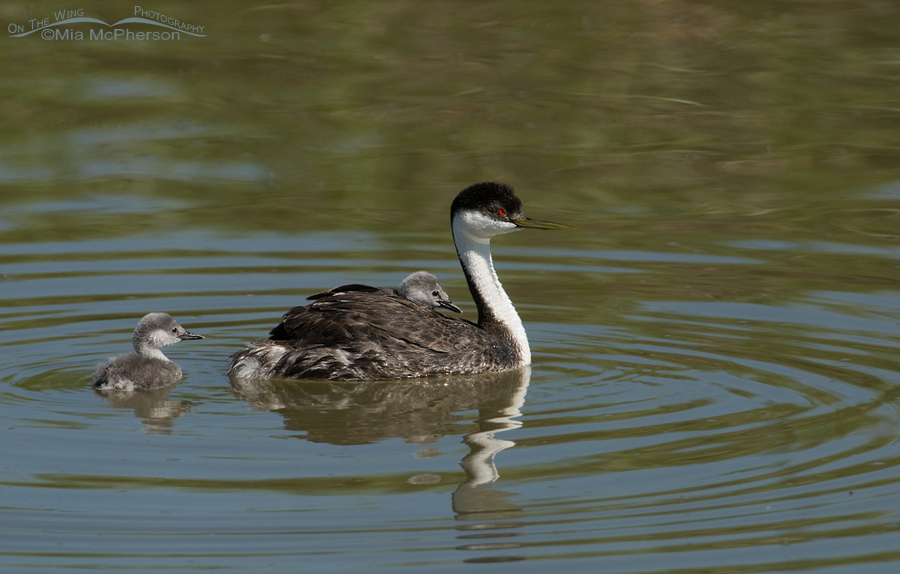All over the U.S. this winter is reported as “The Winter that Wasn’t”. I believe it, I’m living it. The temperatures have been warmer, there has been very little snow in the Salt Lake Valley and it has just been very odd. The numbers of Bald Eagles are very low at Farmington Bay Wildlife Management Area compared to last year at this time and it seems the Rough-legged Hawks have started to move north already because their numbers are dwindling.
But I have begun to notice the signs of spring. Common Ravens and Loggerhead Shrikes are pairing up, Western Meadowlarks are singing their little hearts out and tiny green shoots of grass trying to emerge from the cold soil. So, enough already, if there isn’t going to be a winter then bring on the spring!
 Western Grebe (Aechmophorus occidentals) with its eye on another Grebe – Nikon D200, f6.3, 1/1500, ISO 320, Nikkor 200-400mm VR with 1.4x TC 400mm, natural light
Western Grebe (Aechmophorus occidentals) with its eye on another Grebe – Nikon D200, f6.3, 1/1500, ISO 320, Nikkor 200-400mm VR with 1.4x TC 400mm, natural light
Each spring I look forward to seeing the arrival of Western Grebes in noisy, gregarious flocks. For me, they mean the ice has melted and that spring is making its appearance. Western Grebes are handsome black and white birds with cherry red eyes and long sharp bills. Western Grebes are graceful in the water, clumsy on land and enchanting during their amazing courtship rushes.
I hope to get acceptable (by my own personal standards) of them rushing this spring if the Bear River refuge remains open throughout this years breeding season. Last year there was some flooding and road work happening that closed the road to the auto tour where rushing can usually be seen and photographed.
 Western Grebe family portrait – Nikon D200, f7.1, 1/750, ISO 320, Nikkor 200-400mm VR with 1.4x TC at 400mm, natural light
Western Grebe family portrait – Nikon D200, f7.1, 1/750, ISO 320, Nikkor 200-400mm VR with 1.4x TC at 400mm, natural light
Western Grebes make floating nests using plant materials that are normally attached to submerged vegetation and both sexes incubate the eggs.
Within minutes of hatching the young climb onto the parents back and are hidden under the feathers which is called back-brooding and lasts for several weeks. In my opinion it is very endearing to see the young poke their heads out of the back feathers of the adult to beg for food or to just look around.
Yeah, bring on spring, I can barely wait to see Western Grebes again!
Life is good.
Mia
Click here to see more of my Western Grebe photos plus facts and information about this species.


Spectacular grebe photos Mia. A total WOW!
Thanks Linda, I think Western Grbes are a total WOW!
Lovely post. Those Western Grebes are sleek looking birds with their very defined black, white, and red eyes. You captured it very well, a great way to introduce the spring season.
Thanks so much for commenting on these images Laurence, Western Grebes are very sleek looking birds!
gorgeous shots Mia, never seen one of these, and the grebes i have are usually from a distance
Dan, I hope that you get to see Western Grebes one day soon, they are amazing to watch and photograph. Thank you for commenting.
Lovely shots of a Western Grebe! Beautiful
Thank so much for commenting Scott!
I agree with you, Mia. Bring on the spring! Great shots of the Western Grebes.
Bob, I sure wish we’d see a little more winter here but that doesn’t seem to be happening so spring might as well come on in. Thanks for your comment on the grebe images!